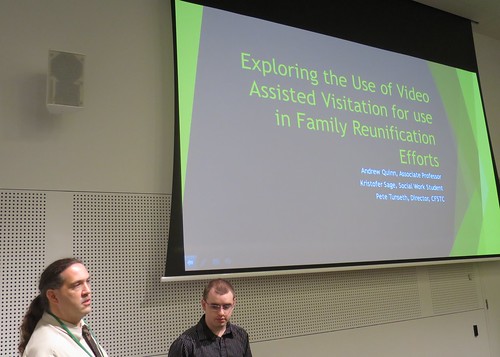Paper presented at #husITa14 in Melbourne, Australia, July, 2014.
Presenters
Andrew Quinn & Kristofer Sage (University of North Dakota, USA).
Abstract
Family reunification is the most common permanency goal of children in foster care. As part of this process there is a need for the child to have face to face contact with his/her family of origin. This can prove difficult in rural states where towns and cities are spread out hundreds of miles apart. This is especially true in the state of North Dakota, USA where harsh winters and/or rapid wind gusts can impede travel. One suggestion to facilitate the reunification process is through the use of Video Assisted Visitation (VAV). VAV uses real-time video technology (e.g. Skype, FaceTime, Polycomm connections, Google Chat) to connect a foster care child with any number of individuals deemed important in the reunification effort. VAV allows the child to stay in touch with the necessary family, friends, and staff when travel is hindered by difficult weather conditions and/or vast distances between individuals.
The academic literature is short on examples of using VAV in the reunification process. Therefore, the authors developed a survey to ask foster care workers in North Dakota their thoughts and opinions on using VAV to facilitate family permanency. Our exploratory study was undertaken to examine the number of workers who have thought about VAV and those who have actually used it. Questions focused on the workers advantages and disadvantages of using VAV, the frequency of VAVs use, and with whom the child used VAV with.
We anticipate our results to reflect the fact that VAV has been adopted, that it is being thought about by the foster care community, and that it is beneficial to the reunification process. Ultimately, this research has the goal of informing the Foster care community and decision makers about potential benefits and disadvantages of VAV use.
Powerpoint
[slideshare id=36933666&doc=sat2171100andrewquinn-140713190741-phpapp02]
Back to programme

